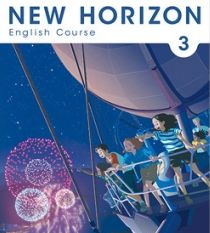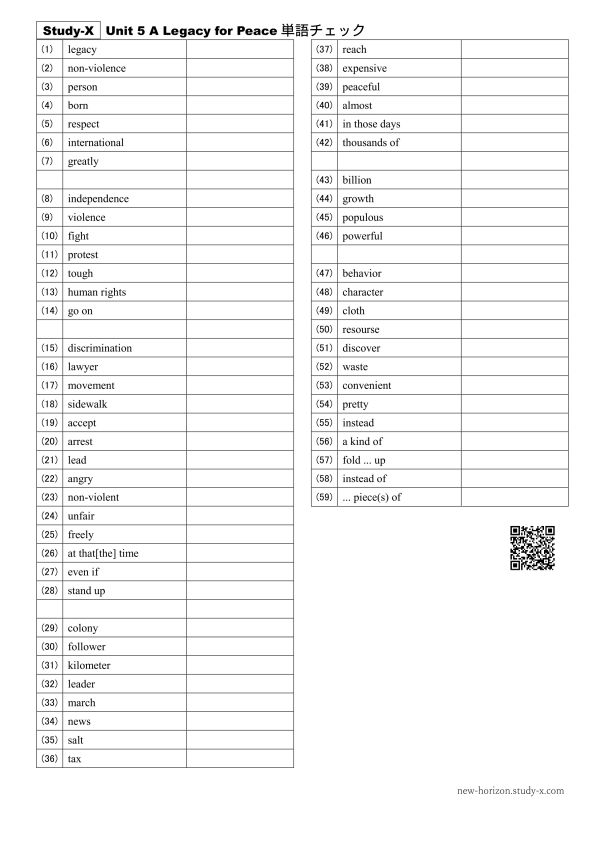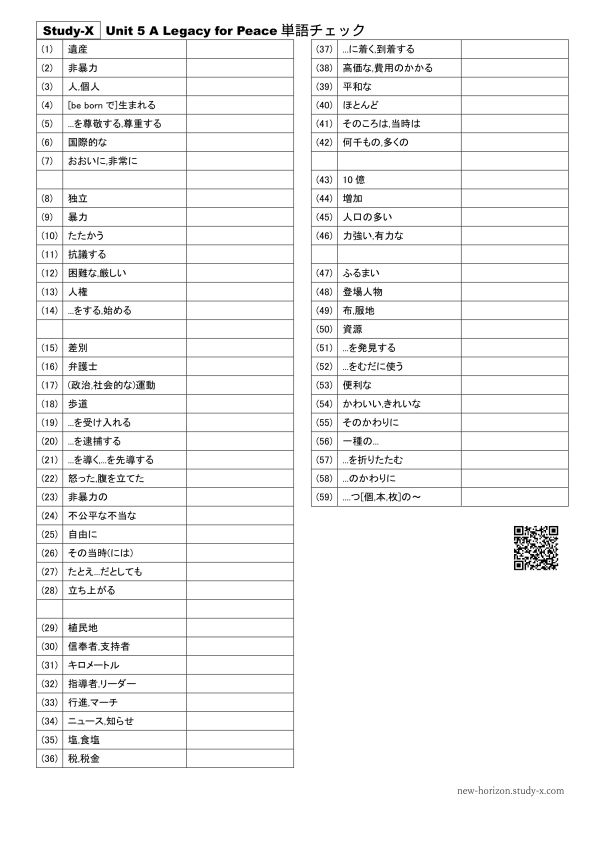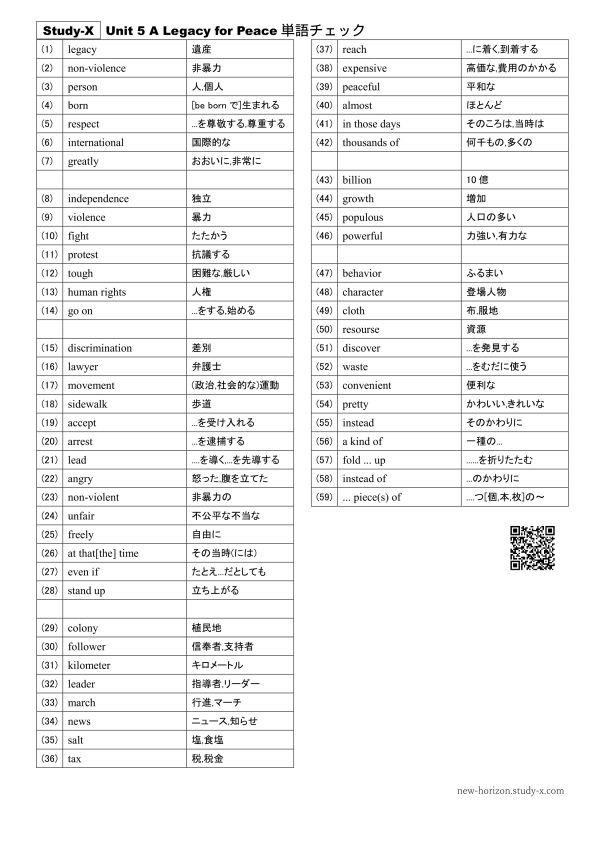- ニューホライズン Study-X
- 中1
- 中2
- 中3
- Unit 0 Three Interesting Facts about Languages
- Unit 1 Sports for Everyone
- Unit 2 Haiku in English
- Unit 3 Animals on the Red List
- Let’s Read 1 A Mother’s Lullaby
- Unit 4 Be Prepared and Work Together
- Unit 5 A Legacy for Peace
- Unit 6 Beyond Borders
- Let’s Read 2 Power Your Future
- Let’s Read 3 A Graduation Gift from Steve Jobs
- SITEMAP
- Study-X 総合サイトへ
Unit 5 A Legacy for Peace

単語 単語チェック
Unit5 1
What is Gandhi known for?
Look. This is a picture I found on the internet.
Do you know who this is? His name is Mahatma Gandhi.
His image is printed on all Indian rupee notes.
He's a person Indian people respect greatly.
Gandhi was born on October 2, 1869.
His birthday is now an Indian national holiday.
It's also the International Day of Non-Violence.
Unit5 2
How did Gandhi work for Indian independence?
Asami: Nice presentation, Josh. That was interesting.
Josh: Thanks. Gandhi is a man who has influenced a lot of people around the world.
Asami: He worked for Indian independence, right?
Josh: Yes. Do you know how he did it?
Asami: Non-violence? Josh: Right. He never used violence, so he's still respected by people who fight for human rights.
Asami: I see. I want to learn more about him.
Josh: Well, he also went on fasts to protest.
Asami:“Fasts”?
Josh: A “fast” means eating little or no food.
Asammi: Wow. That sounds tough.
Unit5 RT 1
What is the main idea of Gandhi's movements?
Gandhi moved to South Africa to work as a lawyer in 1893.
It was under British rule at that time and there was a lot of discrimination.
For example, Indians could not go out at night freely or walk on the sidewalk.
There were also hotels that did not accept Indian guests.
In 1906, the British made a law that was even more unfair to Indian people. Indians in South Africa got angry and stood up against the law.
Gandhi decided to lead a movement to protect their rights.
His message was “Don't follow the law, but don't use violence, even if you are arrested.”
Soon the jails became full of Indians, and Gandhi himself was sent there.
Finally, in 1914, after many years and much effort, the law was removed.
It showed that non-violent movements can be effective.
Unit5 RT 2
Gandhi returned to India in 1915.
India was also a British colony.
In those days, there was a law that the British made for salt.
According to the law, only the British could produce or sell salt.
They put a heavy tax on it.
The Indians were very poor, but they had to buy expensive salt.
The money went to the British.
Gandhi thought it was unfair.
In 1930, Gandhi decided to walk to the sea and make salt himself.
He started with 78 followers.
Thousands of people joined him on the way.
After walking almost 400 kilometers, he reached the sea.
This non-violent march was called the Salt March.
News of the march spread around the world.
It showed people a new way to fight against discrimination.
Gandhi's peaceful fight continued after that.
In 1947, India won independence.
Non-violent protest is the legacy that Gandhi left.
It has influenced famous leaders, such as Martin Luther King, Jr. and Nelson Mandela.
comprihension
Introduction
Do you know which country has the largest population in the world? Here is a graph that shows the population growth in India and China.
Body
According to the graph, the population of India will be larger than that of China from 27. Then India will be the most populous country in the world.
Conclusion
I think that India will become more and more powerful in the world.


